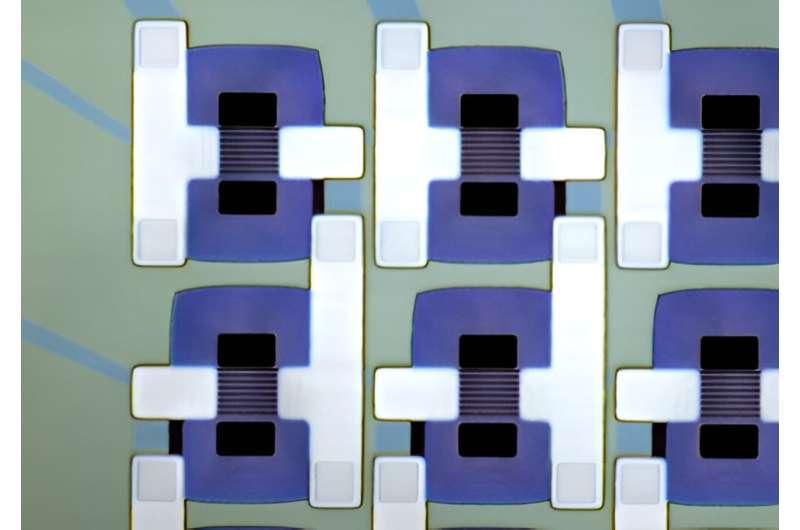
From the minuscule bindings of molecules to the far reaches of space, we’re exploring the universe around us by catching sight of the smallest particles of light.
NIST researchers have unveiled a new kind of single-photon detector array that can identify individual particles of light (photons). It’s useful for spectroscopy, where scientists observe how molecules absorb different colors (or wavelengths) of light. Each molecule has its own color fingerprint on the light spectrum.
This particular detector can catch single photons in the mid-infrared. Here’s how the array works: Multiple super-cold detectors are connected to one another (shown above) in a grid of sorts with an electrical current flowing through. When a photon strikes one of the detectors, it creates a hot spot and acts as a dam to block the current for a short amount of time.
The researchers developed a new technique to determine where, along the columns and rows, the hot spot is. From there, they can create single-photon pictures.
The whole setup is challenging because mid-infrared waves are longer and have less energy to cause the hot spots, compared to visible light, for example. But the scientists have a few tricks up their sleeve and used them to make it work. The specifics can be found in their recently published paper in Applied Physics Letters.
More information:
Benedikt Hampel et al, A 64-pixel mid-infrared single-photon imager based on superconducting nanowire detectors, Applied Physics Letters (2024). DOI: 10.1063/5.0178931
This story is republished courtesy of NIST. Read the original story here.
Citation:
A new wavelength of scientific exploration with single-photon detectors (2024, January 31)
retrieved 31 January 2024
from https://phys.org/news/2024-01-wavelength-scientific-exploration-photon-detectors.html
This document is subject to copyright. Apart from any fair dealing for the purpose of private study or research, no
part may be reproduced without the written permission. The content is provided for information purposes only.







